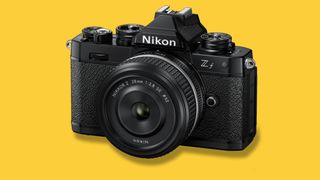It sounds like the Nikon Zf, the company's imminently anticipated new camera, is going to be the first ever Nikon to feature a high-resolution shooting mode.
There's little doubt that the Big N is about to launch the Nikon Zf (particularly after the Nikon Japan website accidentally listed it last week), though there is plenty of conflicting information on the exact specs of the camera, which will be a full-frame version of the retro-styled Nikon Z fc.
• Check out more of the best retro cameras like the Zf and Z fc
It had previously been reported that the Zf would have the same 45.7MP sensor as either the Nikon Z7 II or the Nikon Z8 / Z9 – though with the also-previously-reported price of $1,999, this seemed a little too good to be true.
We speculated that the sensor confusion could be down to a misconstrued comment from a Nikon PR… but now it appears that a very different kind of sensor and technology will be appearing in the camera.
The latest information is that the Nikon Zf will feature a sensor with around 25MP of resolution – perhaps a modified version of the one in the entry-level Nikon Z5, which would make a lot of sense (with the Zf potentially being an upgraded version of the Z5 in the same way that the Z fc was an upgraded version of the Nikon Z50).
Most excitingly, though, is the report from Nikon Rumors that the Zf will feature "some kind of a new high-res mode" – which will almost certainly be achieved via pixel-shift technology, which uses a camera's image stabilization system to take multiple exposures while shifting the sensor, creating a higher-resolution image.
Incidentally, this would also imply that the Nikon Zf will have an in-body image stabilization system – which again tracks with it sharing similar (if not largely identical) technology to the Z5.
As noted, this would be the first time that Nikon has implemented the technology – which has been around for over ten years at this point, having been pioneered by Olympus. All the other major manufacturers have featured the technology, which as standard quadruples the native resolution of a camera.
The 20.4MP OM System OM-1 thus shoots 80MP images, the 61MP Sony A7R V shoots 240MP images, the 102MP Fujifilm GFX 100S shoots 400MP images and so on. By this maths, if it does indeed have a 25MP sensor, the Nikon Zf would be capable of capturing 100MP images.
While it comes with a few provisos (namely that it requires a completely still subject or scene), this is an enormously exciting feature – and one that would make the Zf an even more enticing proposition than the style factor alone.
You can find out more about the best Nikon cameras, along with the best Nikon lenses – and specifically the best Nikon Z lenses designed for its mirrorless system.



